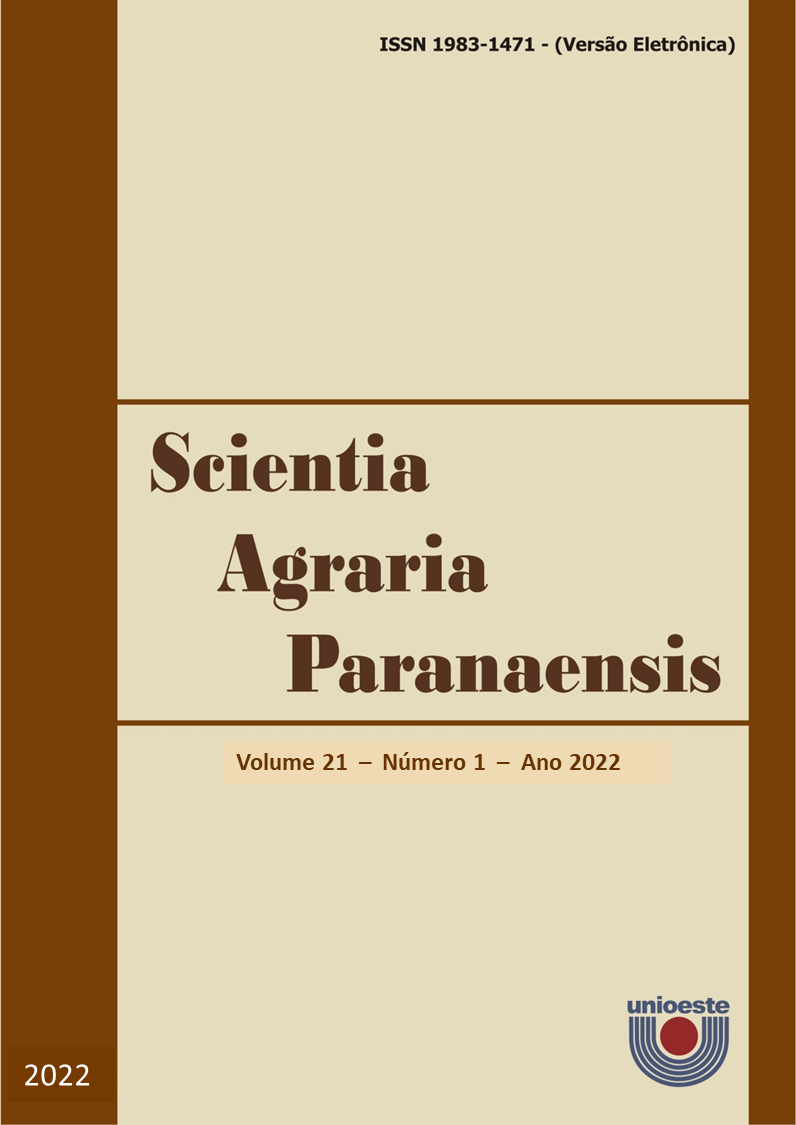Weed interference in cassava in different cycles and cropping systems
DOI:
https://doi.org/10.18188/sap.v21i1.29134Resumo
The study aimed to determine the interference periods of weeds in cassava ‘IAC 90’ cultivated in different cycles and cropping systems. An experiment was conducted in the period 2014/15 (1st cycle) and another was conducted from the pruning of cassava plants in the period 2015/16 (2nd cycle). The experimental design was a randomized block design with split-split plots and four replicates. The plots represented the cropping systems (conventional and no-tillage) and the split-split plots corresponded to the periods with and without coexistence with weeds (0, 25, 50, 75, 100, 125, 150, 175, 200 and 225 days after planting or pruning - DAP/DAPr). In the 1st cycle, there was no interaction between the cropping systems and the coexistence periods and, therefore, based on the acceptable losses of 5% in the root and starch yield of 'IAC 90' cassava, the PCPI was estimated between 20 and 212 DAP and 14 to 214 DAP, respectively. In the 2nd cycle, the CPPWI ranged from 17 to 176 DAPr and 30 to 216 DAPr based on the root and starch yield obtained in the conventional method, respectively. While in no-tillage, the estimated CPPWI ranged from 18 to 198 DAPr and 9 to 218 DAPr based on root and starch yield, respectively. In general, the data indicate that conventional weed management should be carried out in a more intensified way than in no-tillage. In addition, CPPWI based on starch losses can avoid losses in root production.
Downloads
Publicado
Como Citar
Edição
Seção
Licença
Aviso de Direito Autoral Creative Commons
Política para Periódicos de Acesso Livre
Autores que publicam nesta revista concordam com os seguintes termos:
1. Autores mantém os direitos autorais e concedem à revista o direito de primeira publicação, com o trabalho simultaneamente licenciado sob a Licença Creative Commons Attribution que permite o compartilhamento do trabalho com reconhecimento da autoria e publicação inicial nesta revista.2. Autores têm autorização para assumir contratos adicionais separadamente, para distribuição não-exclusiva da versão do trabalho publicada nesta revista (ex.: publicar em repositório institucional ou como capítulo de livro), com reconhecimento de autoria e publicação inicial nesta revista.
3. Autores têm permissão e são estimulados a publicar e distribuir seu trabalho online (ex.: em repositórios institucionais ou na sua página pessoal) a qualquer ponto antes ou durante o processo editorial, já que isso pode gerar alterações produtivas, bem como aumentar o impacto e a citação do trabalho publicado (Veja O Efeito do Acesso Livre).
Licença Creative Commons
Esta obra está licenciada com uma Licença Creative Commons Atribuição-NãoComercial-CompartilhaIgual 4.0 Internacional, o que permite compartilhar, copiar, distribuir, exibir, reproduzir, a totalidade ou partes desde que não tenha objetivo comercial e sejam citados os autores e a fonte.


